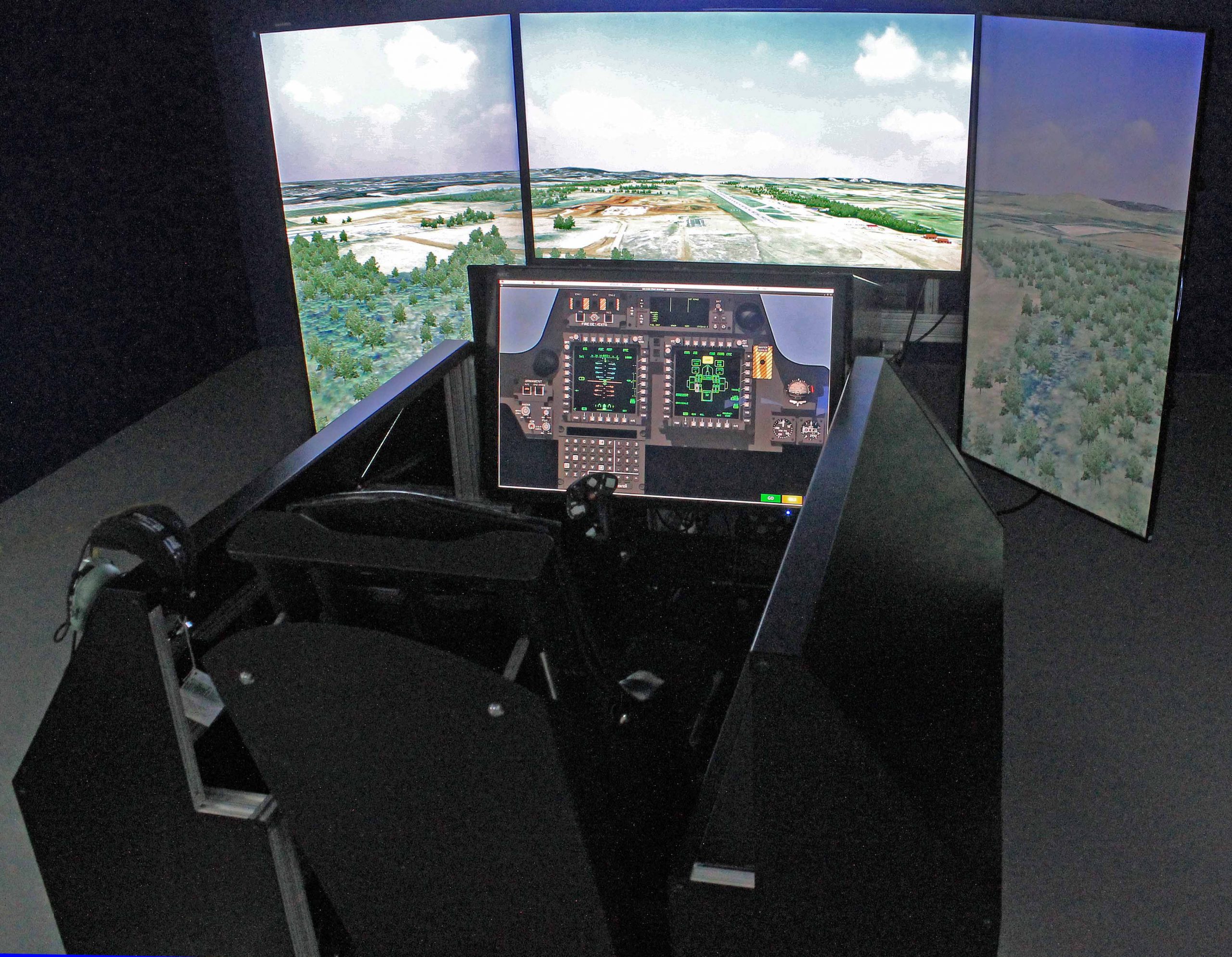The pilot’s station is based on ZedaSoft’s Reconfigurable Cockpit System (RCS), which has been customized to a realistic AH-64D configuration. The cockpit includes a Bihrle Applied Research high fidelity flight model that matches the aircraft’s performance, a control loading system from Simulation and Control Technologies (SCT), discrete and analog signal conversion boards from United Electronic Industries (UEI) and representative touch-screen multi-function displays (MFDs). Simulated radio and intercom functions are provided by the sonomarc® communications framework from PLEXSYS Interface Products. The visual system is 120 degree horizontal and 60 degree vertical out-the-window LED visual display with a five channel virtual reality scene generator (VRSG®) system provided by MVRsimulation®.
The copilot/gunner station is based on ZedaSoft’s Reconfigurable Desktop System (RDS) customized with realistic TEDAC grips provided by Bugeye Technologies. The system testing is controlled through ZedaSoft’s Experimenter/Operator Station (EOS).ZedaSoft, Inc. also provided a low cost Helmet-Mounted Sight (HMS) upgrade to the Apache (AH-64D) simulator running ZedaSoft’s CBA® for Simulation software framework on integrated simulator hardware. The HMS upgrade includes ZedaSoft integration of an SA Photonics SA-62/H Augmented Reality head-mounted display, which is mounted on a standard Apache IHADSS helmet. The SA-62/S provides color 62 degree diagonal field of view at a video resolution of 1920 x 1200 pixels per lens. The pilot’s head tracking is provided by a Thales Visionix InterSense IS-900. The MicroTrax™ head tracker unit is mounted on top of the IHADSS helmet and the SoniWing™ sensors are mounted over the pilot’s seat. A MVRsimulation Virtual Reality Scene Generator (VRSG) channel is added to provide the simulated infrared sensor image that replicates the Pilot Night Vision Sensor (PNVS) system capabilities.
